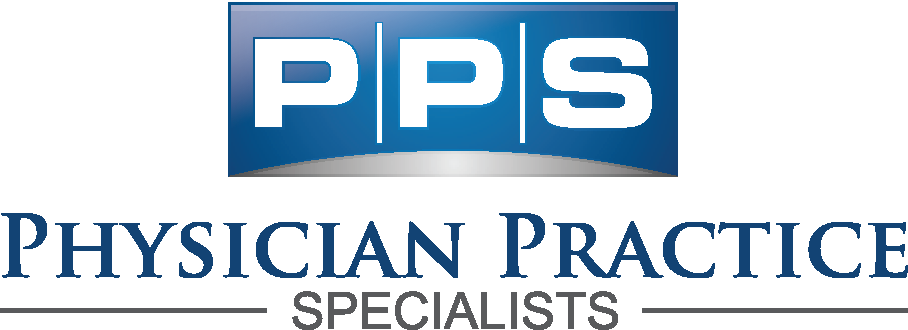How much does it cost to open a medical practice?
Starting a private practice represents a dream-come-true for many physicians & providfers in the United States. The first question most ask is what will cost me to open a new medical practice. Here are some cost estimates based on our experience starting 1000s of practices over the past 15 years. These estimates are for a single provider practice with one location and do not include payroll for the provider/owner.
This was originally written in 2018 and has since been updated to reflect 2023 pricing. Prices since 2018 have increased about 12% on average.
The below costs are covered in more detail below.
- Office Space- $2500-$3400 per month
- Payroll- $4800 per month
- Vendors- Phone, utilities, biohazard etc. $5000 initial setup- $950 monthly
- Equipment- $10000-$15000 for initial purchases. Make sure you can get what you need as supply constraints have hurt the availability of some equipment.
- Insurance- $1000 per year for GL, $5,000-$15,000 on average for malpractice. 1st year providers will pay a lot less since you won’t have a claims history.
- Logo, Website & Marketing- $6000-$7500 for the initial logo and website fees, $75-100 per month for maintenance, security and support and another $2500 towards digital marketing.
- Legal & Accounting- $1500 initial company formation and $250-$500 monthly bookkeeping/accounting (optional)
Total Cost: $35000-$45000 initially with approximately $9000 per month
As we all know, more and more providers are brushing aside any ambition to start a private practice and instead joining a hospital or large group practice. Private practice in 2023 looks entirely different than your parent’s practice 40 years ago. I actually love sitting with docs that have been in practice for 40+ years to hear stories of what it was like back then. Hearing the stories, I can certainly see why physicians today are opting to retire early rather than deal with the frustrations of today’s private practice. The face-to-face visit has been replaced by a face-to-screen patient encounter, and the liability of today’s practice extend far beyond traditional malpractice claims. However, after all of the negatives are considered, it’s still our opinion that the rewards of owning your own practice far outweigh the risks, as long as you have the stomach for the ride. In this article, we cover what to expect as it relates to the costs of opening a new medical practice.
Additional Resources:
- Lean Start-Up Method for New Medical Practices
- 10 Key Metrics to Identify the Best Location For Your New Practice
Defining the costs for a new medical practice
The costs of opening a medical practice vary greatly depending on the specialty, location and ambition of the owner. Here is where we cover the costs of opening a practice in more detail:
1. What Should Office Space Cost for New Medical Practice?
We’ve found the sweet spot (depending on specialty) to be around 2000-2500 sq. feet with a monthly rent of around the same. The price and availability of space is varies greatly based on location so find the best deal and try to stay away from locking yourself into a longterm lease. When evaluating your lease, remember to look at common area maintenance, tax, insurance, option to sublease and what they use to determine rate increases. Inflation or CPI are the two most common methodologies used for this. Make sure there is a cap on how much they can increase your rent and negotiate your renewal term on the frontend. We have seen too many new practices taken advantage of when it’s time to renew a lease. Often, unless you plan to buy something or have outgrown your space (congratulations if that’s the case), the last thing you’ll want to do is to move after the first lease term expires and landlords know this.
What’s the right lease term?
It’s our recommendation to do a 3 year lease or even better, rent space from a colleague for the first year or two. Longterm leases or purchases when starting out is pretty risky when opening in a new community. It’s obviously different if you’ve been established in the community and are venturing out on your own. The key is to keep overhead as low as possible for the first year unless you don’t really care about being profitable. It’s also important to remember that location is more important than aesthetics and size. Open as close as possible next to your primary referral sources, whether those sources are other physicians, hospitals, employers or neighborhoods. People are all about convenience and if opening close to the action costs you 10-20% more per month, this is probably a risk worth taking. When looking at space, remember to consider parking, ease of access, traffic patterns, waiting room size, bathrooms, patient flow and expansion opportunities. You don’t want to box yourself into a space that can only handle 20 patients a day if your goal is to see 35-50 patients a day.
There is a fine balance between having too much space vs. the risks of growing out of your space too quickly.
The balance is different for every specialty but starting out around 2000 sq. feet usually works well. Ideally, you will want to rent for the first 2-3 years with the longterm goal of owning your office. The benefits of owning your own real estate are tremendous in medicine and this should definitely be a major part of your long-term investment strategy.
Source Articles:
- How to Select the Best Location for your New Medical Practice
- 3 Ways to Measure if Your New Practice is Viable- Part 3 of 4
2. Expected Payroll Costs for a New Practice
Start off with one employee that is proficient at multi-tasking and can be cross trained to work the front desk along and help you as a medical assistant. Expect to pay $15-$18 per hour to start out with The key here is to hire slow and be very deliberate about hiring people that can fill multiple roles. Your first employee shouldn’t be someone that only wants to work behind a desk or in the exam room. Always start out with one employee unless you know that you’re going to open your doors and it will miraculously be filled with 30 patients. You need people that are willing to do whatever is needed. If that means checking-in patients, cleaning the toilets, answering the phone or taking vitals, they must be willing to do it. One of the best ways we’ve found to help “specialized” employees get over themselves, is for you to do some of the very things that they don’t want to do. If you’re slow, there’s absolutely no reason why you can’t pick up the phone, clean a toilet or walk a patient to their room.
As the owner, you must be willing to do whatever it takes which means that your pride might get beat up a little at first.
Do I need a payroll service?
Whether you have 1 or 20 employees, utilizing a payroll service to take care of all of the taxes, benefits and regulatory BS is money well spent. Don’t fall into the trap of hiring the person with the lowest wage requirements. A person’s wage is often a reflection of their ability and paying a little more for someone that can fill multiple roles is better than hiring two inefficient individuals for a few dollars less per hour.
3. Selecting the Right Vendors for a New Practice
There are numerous initial vendors that will need to be setup. These vendors include some of the following: EHR, revenue cycle management/billing, credentialing/insurance enrollment, credit card processing, internet(go with the fastest possible), phone(consider VOIP like RingCentral), payroll and sharps/biohazard pickup to name a few.
The first two vendors listed (RCM & Credentialing) are the two most important vendors to spend time researching. They can make or break your practice and really represent the foundation of your organization.
These are two areas where spending some extra money really make a difference in your monthly revenue. The other vendors, all things considered, are pretty inconsequential to your profit and longterm success. You need to negotiate the best rate for all vendors and remember to get at least two quotes to compare. When selecting an EHR, make sure to see it in action at a local practice. This is not only a way to ensure it is a fit for your practice style, it’s also a great opportunity to meet a new referral source. These days, it’s not typically a great idea to have two vendors (one for EHR and RCM) when you can select one that can do an excellent job providing both. Over the past decade, we’ve had the opportunity to work with nearly a hundred different EHRs and billing companies. Through this oftentimes painful experience, we’ve identified a few companies that we believe offer the best of both worlds. A user friendly EHR and a superb billing service that will maximize our client’s revenue. Obviously, it all depends on the specialty of the prospective practice and this is where a company like ours can help narrow down the vendors.
Selecting Your Billing Service, EHR & Credentialing Company
As a new practice, you can expect to pay 6-8% of your monthly collections if an integrated EHR is being offered. The collection fee covers the entire billing service along with the monthly fee typically associated with an EHR/practice management platform. When it comes to credentialing, this is another area where selecting the right vendor can make or break your practice. We wrote an article a few years ago that covers this in more detail which we’ve included below. Suffice it to say, if cash flow, fee schedules and meeting timelines are important to you(which they have to be), you must spend some time selecting the right credentialing/contracting vendor. Below are a few resources that you should find helpful.
Source Articles:
- Should my billing company do my credentialing?
- Why contracting is still critical for a new practice
- Insider Tips to a Faster Credentialing Process- Part 1 of 8
- Can you retroactively bill Medicare after credentialing is complete?
4. Equipment to Purchases for a New Practice
Set a budget before purchasing a single item and stick with it. It’s our recommendation to try to keep all purchases under 10-15 thousand if possible. Make a game of it and see how frugal you can be. There may be a time to buy the latest and greatest equipment, but it’s not when your first starting your practice. Most practices borrow to buy equipment which usually leads to overspending. This is a mistake. Try to find gently used equipment and get by with less when starting out. Remember that any new equipment purchased can be taken as a write-off(Section 179 deduction) but don’t fall into the trap of maximizing your deductions before you’re profitable. Your taxes the first year will likely be pretty insignificant your first year when compared to future years. Save those big purchases when you need to drop your income into a different tax bracket. Your priority for the first year or two is to get your business off the ground and start making money. Remember, everything you buy from McKesson or Cardinal are going to be 3-10x more expensive than an equivalent item from an alternative manufacturer. If you’re in a specialty where technology is always evolving, leasing equipment could also be a good option. Dermatology or cosmetic surgery is one specialty that comes to mind. It’s typically not a good idea to invest in a “new” laser when that same “new” laser could be obsolete in 2 years because of a “newer” laser. One mistake we see a lot of practices make is in the purchase of a bunch of desktop computers initially. You’ll be much better off buying a couple of laptops that can be used with your EHR and be brought into the exam room as needed. Laptops are much more efficient and reliable than they used to be, not to mention how versatile they are.
5. Insurance for a New Practice
You will obviously need malpractice insurance when starting out and this cost varies greatly by specialty, claims history and location. There are two different types of malpractice insurance, claims made and occurrence. I don’t want to spend much time going over the difference but claims made is the type of policy which requires you purchase tail insurance as it only covers you for claims while the policy is active. If you have a lapse in coverage with a claims made policy, that means you’ll be liable for any claims against you, even if the claim is from a time when your current policy is active.
An occurrence policy, is a lot more expensive but is all inclusive. Meaning, you can buy a years worth of occurrence insurance, go on a sabbatical for 5 years and still know that any malpractice claim that arises will be covered by your policy. For a claims made policy, you’ll want to ensure you keep your policy active or purchase tail coverage prior to your sabbatical.
Regardless of which policy you select, you should negotiate with the carrier to ensure you’re getting every available discount. It’s always recommended to get at least a couple quotes for coverage. In addition, you should break up the payments into quarterly installments. General liability insurance is another insurance needed for a new practice but thankfully it’s nowhere near the cost. It covers you in the event a patient slips in your office and breaks their hip.
You also should consider obtaining HIPAA, Errors and Omissions and cyber security insurance depending on the cost. A lot of times, these can be included as riders on your malpractice policy without any added costs.
6. Websites & Marketing- What does a new practice need and why?
Websites, branding and marketing are a huge one for all businesses but especially when you are first starting. If there is one area that we feel it’s worth splurging on, it’s with your online budget. You may not have the most opulent office in the city or have your own cafe, free internet or the most comfortable chairs but none of that should stop you from impressing your patients with your online office. Think of your website as the digital representation of who you are and what you do. You may not have the best decorations or be in the office of your dreams but this shouldn’t stop you from going all out with your website. Even on a budget, you can have a really nice website. Remember, your website represents the first place you’ll meet your patients and how this first meeting goes often determines if they ever set foot in your doors. One mistake we often see with new practices is that they build a site on a budget with the expectation that they’ll invest in a new website down the road. The problem with this approach is that your ability to grow and be profitable enough to do this “down the road” will be greatly hampered by a poor performing, ugly website. The templated websites on WIX, GODADDY or 1and1.com have two things in common, they are cheap and they suck. Talk to any web developer or GOOGLE expert and they will tell you that these templated websites will never actually perform well on search. Meaning, even if you build the best looking WIX site ever created, you will only actually capture about 20% of the available patients if your site was built on a platform that Google likes.
So what should it cost to do a website and logo?
Okay, now to the reason you’re here, what should you expect to pay for a website and marketing? It obviously varies based on the number of locations, specialty and number of providers but most practices can accomplish building a nice professional logo, website and do at least 6 months of online marketing for around $7500.
Logo- You need a professional logo in high resolution in the following formats, .png(transparent background used online), .jpeg, .pdf and your source file which would be either .eps or .ai. If you go the cheap route and design something without these formats then you’ll just have to redo it down the road when it’s time to do a sign or any print/online advertising. You can expect to pay $550-$1500 for a quality logo with a few revisions.
What you need in a website
Website- You should spend at least $2,500 on a website and that would be for a basic but effective website that will perform well on the search engines. Monthly security, compliance, hosting and updates will run you about $75-$100 per month. When it’s time to design your website, you don’t want too simple but you also need patients to be able to easily navigate and find what they’re looking for. It’s our recommendation to have a minimum of 5-7 pages (Home, About, Contact, Insurance, Services, FAQs) but if you have the time, we strongly encourage you to spend some time to educate your patients about your services in the form of static pages under services or blog posts. Put yourself in your patient’s shoes and make sure to answer the questions that you would be looking for if you were wanting to schedule an appointment.
Resources:
- Top Ways To Attract New Patients (83 Different Strategies Analyzed)
- Sample Medical Website Designs
- Strategies For Success Through Covid And Beyond
7. Legal & Accounting
We will be updating this soon with some more information regarding costs around legal and accounting.
Updated: 04.04.2023


